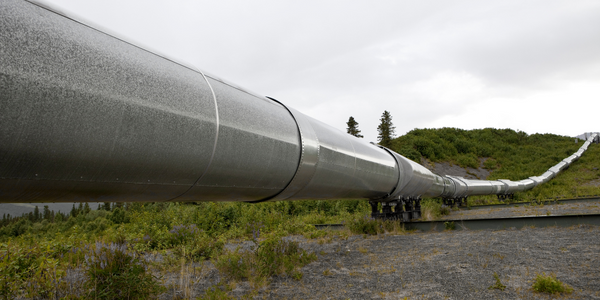Technology Category
- Analytics & Modeling - Big Data Analytics
- Platform as a Service (PaaS) - Application Development Platforms
Applicable Industries
- Oil & Gas
- Transportation
Applicable Functions
- Procurement
- Sales & Marketing
Use Cases
- Last Mile Delivery
- Picking, Sorting & Positioning
Services
- Cloud Planning, Design & Implementation Services
- Data Science Services
About The Customer
Sleeping Duck is an innovative mattress company based in Australia. Founded in 2014, the company has made a name for itself in the crowded online mattress space by delivering high-quality, customizable sleep experiences to customers. The company's business model and focus on customer service have made it one of Australia's most recognizable brands and a leader in a highly contested market. Data drives every decision that the company makes, from streamlining the customer journey and optimizing advertising spend to pinpointing new markets for growth and ensuring superior customer service.
The Challenge
Sleeping Duck, an Australian mattress company, was facing the challenge of managing and deriving actionable insights from data scattered across various sources. The data resided in Software as a Service (SaaS) platforms, web apps, marketing platforms such as Facebook and Google Ads, and in the company’s own product. The process of extracting relevant information from these disparate sources was complex and manual. The company's engineers would have had to write and maintain custom scripts to extract data, a practice that was neither scalable nor sustainable. The company needed a solution that could efficiently pull in data from these sources, manage it, and feed it into their business intelligence solutions for data-driven decision making.
The Solution
Sleeping Duck adopted a two-pronged solution involving Snowflake and Fivetran. The first step was to migrate to a reliable data warehouse in the cloud. They chose Snowflake due to its SQL-based platform that could scale compute and storage separately and quickly. This flexibility was crucial as the company's data analytics needs were not expected to scale in predictable ways. The second part of the solution was to implement a data pipeline solution that could pull in terabytes of data from various sources without much coding or configuration. Fivetran, a data integrator option in Snowflake, was chosen for this purpose. Fivetran pulls critical business data from dozens of sources in the cloud to the company’s Snowflake data warehouse. From there, the data can be manipulated as needed and sent to a business intelligence platform for analysis. The data can be synced monthly, weekly, daily or even every 15 minutes, providing near real-time business intelligence.
Operational Impact
Quantitative Benefit

Case Study missing?
Start adding your own!
Register with your work email and create a new case study profile for your business.
Related Case Studies.

Case Study
Taking Oil and Gas Exploration to the Next Level
DownUnder GeoSolutions (DUG) wanted to increase computing performance by 5 to 10 times to improve seismic processing. The solution must build on current architecture software investments without sacrificing existing software and scale computing without scaling IT infrastructure costs.

Case Study
Remote Wellhead Monitoring
Each wellhead was equipped with various sensors and meters that needed to be monitored and controlled from a central HMI, often miles away from the assets in the field. Redundant solar and wind generators were installed at each wellhead to support the electrical needs of the pumpstations, temperature meters, cameras, and cellular modules. In addition to asset management and remote control capabilities, data logging for remote surveillance and alarm notifications was a key demand from the customer. Terra Ferma’s solution needed to be power efficient, reliable, and capable of supporting high-bandwidth data-feeds. They needed a multi-link cellular connection to a central server that sustained reliable and redundant monitoring and control of flow meters, temperature sensors, power supply, and event-logging; including video and image files. This open-standard network needed to interface with the existing SCADA and proprietary network management software.

Case Study
Refinery Saves Over $700,000 with Smart Wireless
One of the largest petroleum refineries in the world is equipped to refine various types of crude oil and manufacture various grades of fuel from motor gasoline to Aviation Turbine Fuel. Due to wear and tear, eight hydrogen valves in each refinery were leaking, and each cost $1800 per ton of hydrogen vented. The plant also had leakage on nearly 30 flare control hydrocarbon valves. The refinery wanted a continuous, online monitoring system that could catch leaks early, minimize hydrogen and hydrocarbon production losses, and improve safety for maintenance.

Case Study
Airport SCADA Systems Improve Service Levels
Modern airports are one of the busiest environments on Earth and rely on process automation equipment to ensure service operators achieve their KPIs. Increasingly airport SCADA systems are being used to control all aspects of the operation and associated facilities. This is because unplanned system downtime can cost dearly, both in terms of reduced revenues and the associated loss of customer satisfaction due to inevitable travel inconvenience and disruption.

Case Study
IoT-based Fleet Intelligence Innovation
Speed to market is precious for DRVR, a rapidly growing start-up company. With a business model dependent on reliable mobile data, managers were spending their lives trying to negotiate data roaming deals with mobile network operators in different countries. And, even then, service quality was a constant concern.








